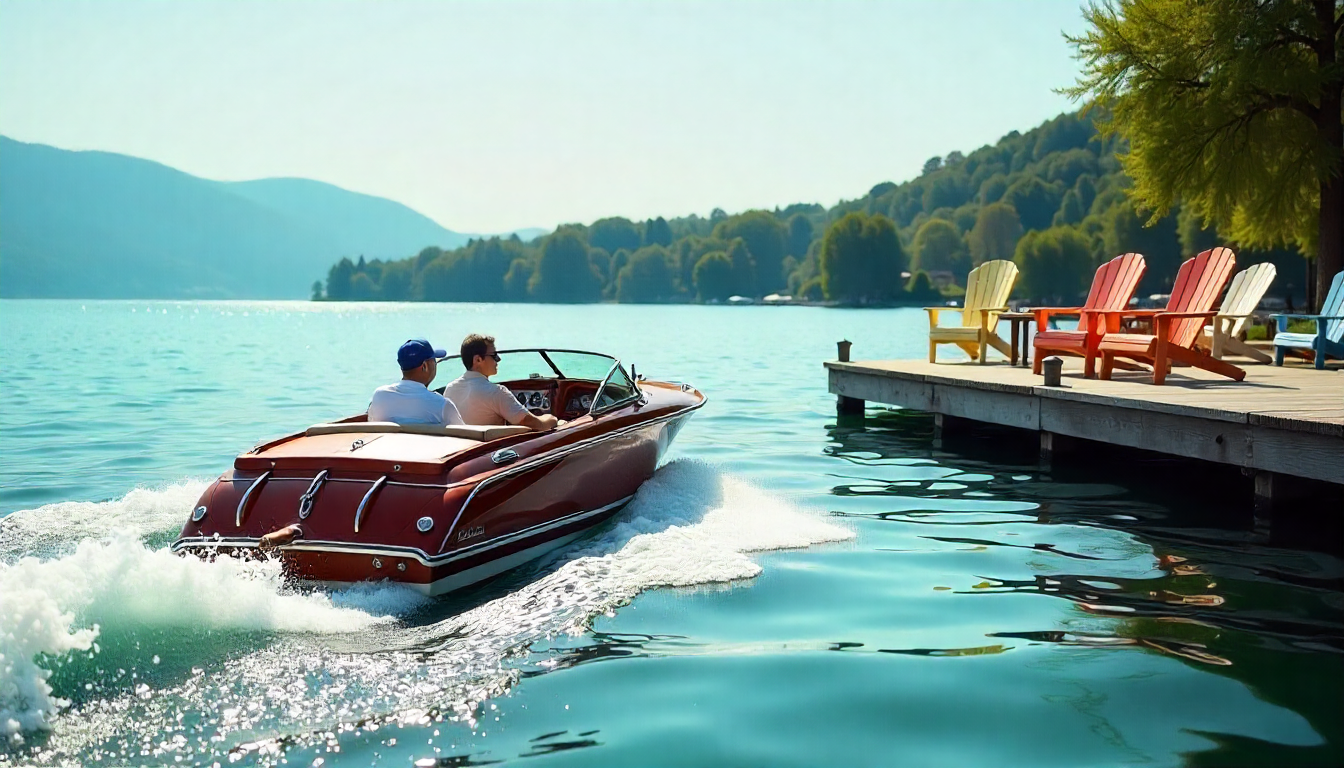Inledning
When it comes to navigating waterways, the safe boating rule about dock distance is one of the most important regulations boaters must follow. Knowing how far to stay from a dock above 5 MPH is not only a matter of compliance but also a crucial step in ensuring the safety of passengers, vessels, and surrounding environments. For boat operators, the ability to judge distance and speed accurately can prevent collisions, reduce wake damage, and help avoid unnecessary boating accidents. This article explores the rule in depth, breaking down practical advice, legal considerations, and safety tips every boater should know.
Understanding the Safe Boating Rule
The safe boating rule that governs dock distance is designed to keep waterways orderly and secure. In most jurisdictions, boats traveling above 5 MPH are required to maintain a safe distance—typically at least 100 feet—from docks, piers, and shoreline structures. This ensures that wakes do not endanger swimmers, small boats, or fragile waterfront property.
Keeping a buffer zone around docks is not just about protecting structures. It is also about protecting lives. Passengers on nearby vessels, anglers on piers, or families enjoying waterfront activities are at risk when boats ignore this essential regulation.
Why Dock Distance Matters for Boaters
Preventing Boating Accidents
One of the leading causes of boating accidents is improper handling near docks. At higher speeds, boats create wakes that can destabilize smaller vessels or cause injuries to people near the shoreline. Respecting the safe boating rule helps reduce these risks.
Protecting Passengers and Property
When a boat exceeds safe speeds near a dock, the force of the water can damage moored vessels or even dislodge them. Property owners often invest in protective equipment, but no amount of safety equipment can counteract reckless operation. For responsible boaters, observing dock distance rules is a basic duty.
How Far to Stay From a Dock Above 5 MPH
General Guidelines
Although regulations can vary depending on local waterways, the general guideline is clear: maintain at least 100 feet from docks, piers, bridges, and swimmers when traveling above 5 MPH. Some areas expand this distance to 200 feet for added protection.
Local Regulations
Always check local regulations before operating your vessel. In some states, specific safety distances are enforced by the coast guard or state authorities. Knowing these rules is as important as learning to operate your boat.
Safety Tips for Following the Rule
Maintain Awareness of Speed and Distance
Boaters must always check their speed and judge distances carefully. A GPS system can help monitor speed, but judgment is equally important.
Use a Float Plan
Before heading out, prepare a float plan that includes your intended route, estimated time of return, and emergency contacts. This helps ensure a safe trip and provides vital information if unexpected situations occur.
Wear Life Jackets
All passengers should wear life jackets at all times. A single life jacket can make the difference between life and death in sudden accidents. Properly fitted jackets life provide buoyancy and protection.
Designate a Sober Operator
Alcohol is a leading factor in boating accidents. Always designate a sober operator to ensure a safe trip and protect the lives of everyone on board.
Beyond Dock Distance: Broader Boating Safety Rules
While the dock-distance safe boating rule is crucial, it is only one part of a larger system of boating safety rules. Other regulations include proper navigation lighting, observing no-wake zones, and maintaining safe speeds in crowded waterways.
Boaters are also encouraged to enroll in a boating safety course. These courses provide essential knowledge about regulations, emergency procedures, and specific safety practices. A vessel safety check—often offered by the coast guard auxiliary—can also help identify missing safety equipment.
Equipment and Preparation for Safe Boating
Life Jackets and Safety Equipment
Carrying enough life jackets for all passengers is mandatory. Regulations often specify that children must wear them at all times. Beyond life jackets, safety equipment such as fire extinguishers, signaling devices, and an engine cut switch are also essential.
Checklista inför avresan
Before departure, always check that safety gear is on board, fuel levels are adequate, and weather conditions are favorable. Pre departure checks save lives and ensure a smooth outing.
Free Vessel Safety Programs
Many organizations, including the coast guard auxiliary, offer free vessel safety checks. These inspections confirm compliance with regulations and provide recommendations for improving onboard safety.
Legal Responsibilities of Boat Operators
Boat operators carry a responsibility to know and follow all boating rules. This includes observing dock-distance regulations, carrying proper documentation, and maintaining equipment. Failure to comply can lead to fines, loss of boating privileges, or even criminal charges in cases of negligence.
By learning and respecting boating safety rules, operators not only protect passengers but also contribute to safer waterways for all boaters.
Practical Advice for Everyday Boaters
Know Your Vessel
Different vessels handle differently near docks. A large power vessel generates a larger wake than a small fishing boat, meaning it must maintain greater distance when above 5 MPH.
Stay Informed
Conditions on the water often change quickly. Wind, tide, and boat traffic all affect handling. Responsible boaters stay alert and adapt.
Always Check Before Turning
When changing direction near docks or other vessels, always check blind spots and ensure the path is clear. This prevents collisions and helps maintain order in busy waterways.
Slutsats
The safe boating rule about dock distance above 5 MPH is more than a legal obligation—it is a commitment to ensuring a safe environment for boaters, passengers, and waterfront communities. Observing this rule helps prevent boating accidents, protects lives, and preserves the enjoyment of waterways for everyone.
By following regulations, completing a boating safety course, wearing life jackets, and conducting regular vessel safety check inspections, boaters demonstrate responsibility and respect. Ultimately, safe boating is about preparation, awareness, and care for others on the water.

 Safe Boating Rule: How Far to Stay From a Dock Above 5 MPH">
Safe Boating Rule: How Far to Stay From a Dock Above 5 MPH">
